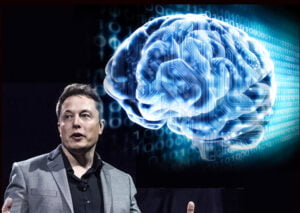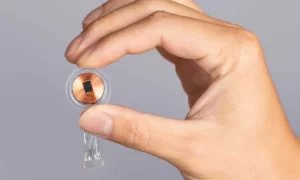While Elon Musk was making headlines for his Twitter antics, his team at Neuralink was perfecting their brain-computer interface technology. Elon Musk intends to use Neuralink to create minuscule coin-sized implants that allow humans to connect their brains to a computing device and communicate. Musk also wants to use Neuralink for a variety of medical applications.

Image Source: Britannica
While Elon Musk was making headlines for his Twitter antics, his team at Neuralink was perfecting their brain-computer interface technology. Elon Musk intends to use Neuralink to create tiny coin-sized implants that allow humans to connect their brains to a computing device and communicate. Musk also wants to use Neuralink for a variety of medical applications.
The Power Of AI
Elon Musk intends to use the implants to improve artificial intelligence and machine learning systems. He works with those who are paralysed or blind. Musk predicted in 2019 that his company’s technology would someday allow individuals to reach “symbiosis with artificial intelligence.” According to the current presentation, we are still decades away from integrating our brains with AI, but Musk and his team will be working on it.

Image Source: Scroll
The Great Leap In Machinery And Robotics
When it comes down to its most basic form, Neuralink is a new way for humans to communicate with robots and computers. It would be accurate to describe it as an overly sophisticated pointing and input device. Using a dummy filled with a gelatinous “brain proxy” material, the Neuralink team demonstrated how its surgical robot inserts electrode threads. These electrode threads stimulate the brain while also capturing outgoing information.

Image Source: Threatpost
“It’s capable of manoeuvring these tiny threads that are only on the order of a few red blood cells wide and inserting them reliably into a moving grain while avoiding vasculature,” said DJ Seo, the company’s vice president. “It’s quite good at doing this reliably.”
The Medicine Factor
Elon Musk disclosed during the presentation that Neuralink’s first two targeted applications for its technology would be to allow people with paralysis to use their digital gadgets flawlessly and to restore vision to those who have lost their eyesight. “Even if someone has never had vision ever like they were born blind, we believe we can still restore vision,” Musk said.

Image Source: ICT And Health
Although the demonstration did not include any applications or experiments in which vision was restored in a blind individual, Musk and his team did show a monkey being fed a visual signal or sensation and the monkey’s brain registering it.
The Next Gen Chip
Musk and his team created the Neuralink chip, which is the size of a coin and has over 1000 channels for recording and stimulating adjacent neurons. The team is now working on a next-generation semiconductor with 4,098 channels in the same chip size. This also means that Neuralink’s implant will be upgradeable, and the business would like customers to upgrade their chips regularly if they get one implanted.

Image Source: The US Sun



















































































